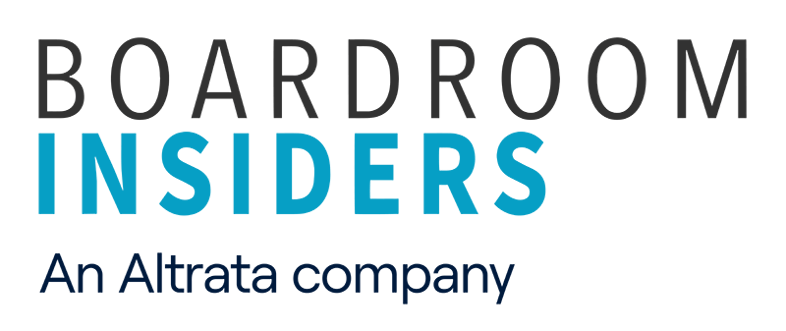
According to executive talent search experts, the wrong hire can cost a company up to three times their salary, when you factor in the loss of productivity, workplace disruption and new hiring costs. When you’re talking about hires at the SVP level and above, which come with huge salaries, the cost of a bad hire can run into the millions. And that does not even take into account the potential cost of a senior executive taking the business in a direction that does not work.

No company wants -- and can afford -- a JCPenney scenario.
Case in point: J.C. Penney’s 2011 hiring of Apple retail hotshot Ron Johnson as CEO was a disaster for the company, sending it into a downward spiral from which it took several years to emerge. Johnson’s bold strategy to reinvent the retailer was blamed for sending its annual sales plummeting by $6 billion and causing a major cash crisis, according to Fortune.
For his part, Johnson blamed the company's culture for his failed 17-month tenure, saying employees were entrenched and resistant to change. "The truth is nobody wanted change," he said. "The team there was very comfortable with their place in the market."
Who could have predicted this? After all, Johnson’s tenures at both Target and Apple were unqualified successes. He is an enormously talented executive who was personally recruited to Apple by Steve Jobs. But culturally, JCP was worlds away from Target and Apple. And what executive search pros know is that “soft” factors like cultural fit sometimes make all the difference between a good hire and a bad hire.
No company wants—and can afford—a J.C. Penney scenario, but what steps are companies taking to get to know talent better and assess cultural fit, thus avoiding less-than--optimal executive hires? We set out to find out by talking to one of our customers, Christian Henning, who works on Microsoft’s Global Executive Talent Acquisition team.
Henning and his colleagues around the globe focus on just a relative handful of critical senior executive hires—and board searches--every year. Given the strategic importance of these hires, Henning and his team leave no stone unturned when it comes to uncovering insight and information on the candidates under consideration. “We are always seeking more flavor on executives that you don’t find on a CV or on LinkedIn,” he says, “like what special skills they might have acquired such as acquisition integrations, product launches, or being in global roles that expose them to other countries and diversity. We’re also always interested in what other people say about them—to get a richer profile of the person and what makes them unique.”

Henning added that having a lot of insight on prospective candidates also gives his team a “hook” to get them interested in having an initial conversation. “People tend to be proud of what they have done,” he said. “If you can find out more about what they have accomplished, you can use a nugget of insight as a hook to get them to talk to you in the first place.” Then, he said, you can use other nuggets of insight, such as what they have said about their personal values or what kind of culture they prefer to work in, to get them to say “yes.”
Proactively get to know top industry talent BEFORE the need arises.
Another best practice employed by Microsoft’s Global Executive Talent Acquisition team is proactively getting to know top industry talent before the company has a need for it. This helps prevent bad hires because the team doesn’t have to start from scratch and fast-track relationships when a need arises. Henning says that some of his colleagues regularly attend industry events for the purpose of networking with talent and cultivating relationships. They are playing the long game in this sense—going where the talent goes and learning more about them and their ecosystem before a need arises.
View and Download Complete Sample Executive Profiles
Microsoft is pretty unique in what it is doing. A relatively small number of companies -- mainly in the tech industry -- invest in in-house executive talent teams, according to Simon Mullins, Partner at ESIX [Executive Search Information Exchange], a peer group for corporate executive recruiting professionals. Like Henning, Mullins says that the ability of internal teams to take a long-term, proactive approach to succession planning, as well as their ability to understand and add value to the business, are the main advantages of maintaining an internal executive talent acquisition team. He said that hiring an external search firm is more of a "transactional approach" while an internal team typically adds a lot of value to the business by "understanding long-term challenges, critical talent gaps, and where the business is trying to go... it's about finding the talent that you know will be valuable in the future and then delivering it when it is ready and needed."
Henning and Mullins identified the following five critical best practices for companies looking to develop and sustain world-class executive talent acquisition teams internally.
-
The team must engage in proactive, ongoing networking with talent in order to get ahead of recruiting needs.
-
The team must develop and sustain relationships with the company’s business leaders. Otherwise, business leaders will tend to hire external search firms, cutting the team out of the process.
-
The team must work hard to understand the needs and strategies of the business heads—and demonstrate this understanding to them over and over again so they are seen as a valuable partner in executive talent acquisition.
-
The team must have the endorsement and support of the CEO to ensure it receives the proper support and investment to sustain itself. (Note: both Henning and Mullins cautioned that a “start and stop” approach driven by budget peaks and valleys doesn’t work because the team will lose momentum both with talent and business leaders.)
-
The team must continually prove its value, not through traditional recruiting metrics such as time-to-fill, but via storytelling and anecdotes that show how it has added real value to the business.
As far as employing storytelling for measuring success, Henning said that his team aims to collect stories from the business to demonstrate added value. For example: “The person we hired to lead X has transformed the business by being a sales talent magnet; he hired X new sales people who have driven X revenue.”
Henning concluded, “Our goal is to be indispensable for the business.”



.jpg?width=640&name=03.%20Executive%20Talent%20Acquisition%20Best%20Practices%20(1).jpg)




Share Your Thoughts